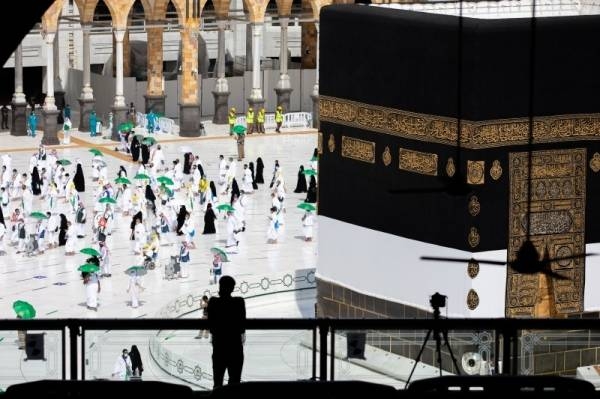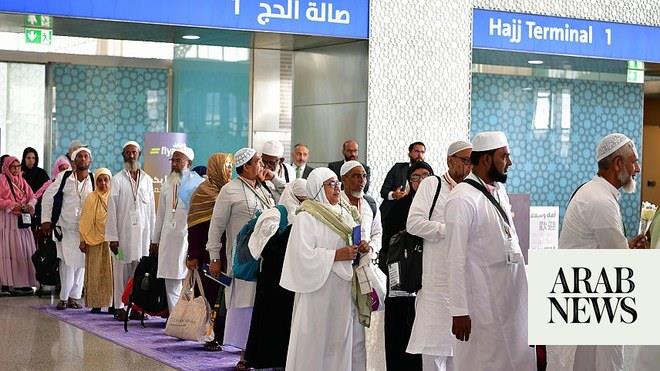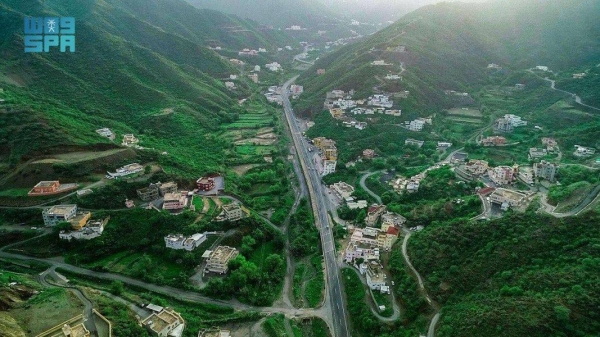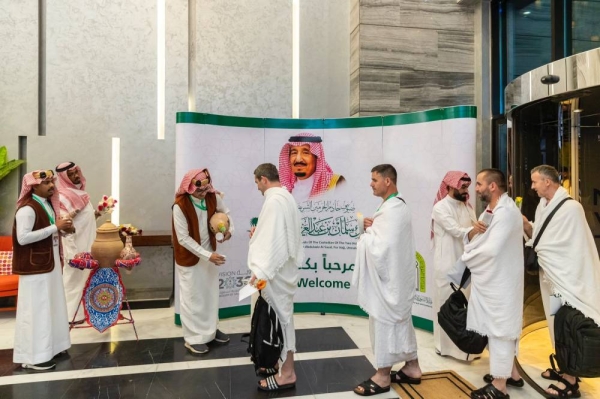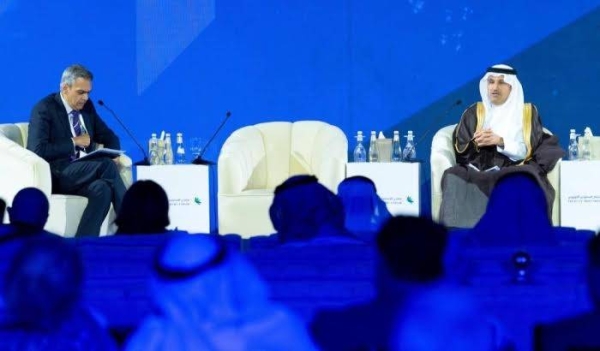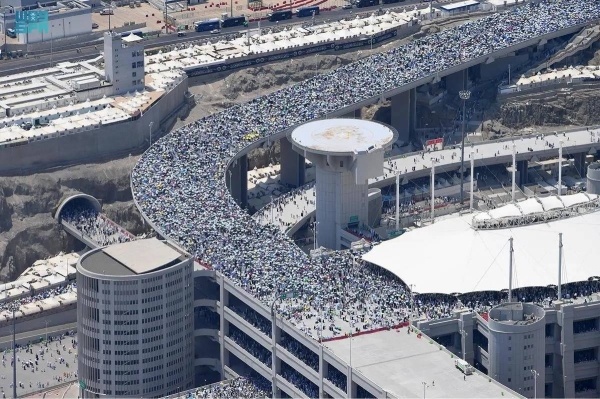
From 1390 AH to 1443 AH, Saudi Arabia received more than 99 million pilgrims, according to data compiled by the General Authority for Statistics (GAStat).
The Kingdom targets to receive over 30 million Umrah pilgrims annually in seven years, which is one of the goals of Saudi Arabia’s Vision 2030.
Hajj, the fifth pillar of Islam, has been a distinguished ritual that the faithful have always been keen on performing whenever they could.
To perform Hajj, Muslims from all over the world, irrespective of their country, race, or status, travel to Makkah. The journey of Hajj, including the trip to Makkah, witnessing the Kaabah and visiting the holy sites, is a goal and wish for all believers.
But traveling to Makkah was not always easy. According to Dr. Fawaz bin Ali Al-Dahas, former director general of the Makkah History Center, in the past "the means of transport were primitive and slow. Pilgrims faced all sorts of difficulties when traveling from around the world to Makkah by ships, on camel back and some even on foot. The journey was not easy. It was unsafe and quite adventurous. The roads leading to Al-Hijaz were undeveloped, the lack of water stations could mean death from thirst, and raiders could attack pilgrims" caravans and steal food and other belongings they carried."
Pilgrimage routes were long, winding and unsafe, and the trip to Makkah was seen as a risk; scenes of pilgrims bidding goodbye to their relatives would often depict a lack of hope in the success of the journey, which could span several months on difficult and dangerous routes.
But a new chapter opened with the establishment of the Saudi state when conditions improved tremendously and the pilgrimage journey became easy thanks to the safety and security in Saudi Arabia and the steady development of the means of transport until aviation made it possible for pilgrims from various corners of the world to reach Makkah within hours. For seafaring pilgrims, modern vessels equipped with comfortable amenities make the voyage across oceans and seas to Jeddah Islamic Port a pleasant journey.
Those traveling by land enjoy air-conditioned buses that travel along highways stopping often for rest and refueling.
Al Mashaaer Al Mugaddassah Metro line, inaugurated by Custodian of the Two Holy Mosques King Salman, is integrated into the transport and logistics system provided by Saudi Arabia to pilgrims, reflecting the Kingdom"s care for pilgrims, its desire to facilitate their flow according to the highest standards of quality and safety. The train helps alleviate traffic congestion and makes movement easy, safe and fast within the holy sites.
During the Saudi era, the Grand Mosque had the highest level of development, attention and care. The founder of the state, King Abdulaziz, ordered in 1344 AH a complete restoration of the Grand Mosque. Everything that required repair was fixed, and the entire mosque was clad in marble.
In 1345 AH, King Abdulaziz ordered the installation of pavilions in the courtyard (Mataf) of the mosque, to protect worshippers from the heat.
Dr. Al-Dahas said in the same year, King Abdulaziz ordered that the 395.35-meter-long and 20.5-meter-wide floor of Masa"a be tiled with square flintstones, fixed with lime mortar.
In 1346 AH, he ordered another repair of the Grand Mosque, which included restoration and painting. The Maqam Ibrahim, the Dome of Zamzam, and Shazrawan of the Holy Kaaba were restored.
In early 1373 AH, King Abdulaziz ordered the installation of a motor to pump Zamzam water, and later he ordered the construction of a building for al-Siqaya (where Zamzam water is given to pilgrims) in front of the Zamzam well. He also ordered the replacement of the six lanterns of Hijr Ismail with electric lights, as well as the tiling of the floor of Safa and Marwa.
In 1375 AH, King Saud delivered his historic speech initiating the expansion of the Grand Mosque, which was ordered by the founder, and construction work started on the 4th of Rabi` Al-Akhar the same year. This expansion consisted of three floors, the basement, the ground floor, and the first floor, the construction of the two-floor corridors between Safa and Marwa and the expansion of the Mataf. The Zamzam well was thus situated now in the basement.
During the reign of King Faisal in 1387 AH, the Maqam Ibrahim was covered in a glass cover. In 1391 AH, King Faisal ordered the construction of a building for the library of the Holy Mosque, and in 1392 AH, construction work began on the complex for manufacturing the Kaaba Kiswa in its new location in Umm Al-Joud.
In 1396 AH, King Khalid completed the construction and first expansion of the Grand Mosque. Also during his reign, in 1397 AH, the factory of Kaabah Kiswah was inaugurated.
In the year 1398 AH, the Mataf courtyard was expanded, and its floor was tiled with heat-resistant marble brought from Greece, to increase the comfort of worshipers and pilgrims.
The expansion of the Mataf courtyard entailed moving the pulpit and the makbariya, expanding the basement where the Zamzam well is situated, and moving its entrance close to the edge of the old mosque, in the direction of Masa"a. Moreover, spouts were installed for drinking water, and a glass wall surrounded the well.
At the beginning of 1406 AH, King Fahd ordered tiling the floor surface of the first Saudi expansion with cold- and heat-resistant marble.
In 1409 AH, King Fahd laid the foundation stone for the start of the second Saudi expansion, and in 1411 AH large courtyards surrounding the Grand Mosque were built and prepared for performing prayers, especially in times of great crowding. At the time, these courtyards, covering 88,000 square meters, were tiled with cold- and heat-resistant marble and were illuminated and furnished.
In 1415 AH, the Safa area was expanded on the first floor to facilitate the movement of those who perform the Saie between Safa and Marwa.
In 1418 AH, Al-Raquba Bridge was constructed; it connects the roof of the Grand Mosque to Al-Raquba area from Marwa side, to facilitate entry and exit to the roof of the Grand Mosque.
In early 1432 AH, King Abdullah inaugurated the largest expansion in the history of the Grand Mosque, raising the total capacity of the mosque – which also included an expansion of the Tawaf courtyard – to 1.850 million worshipers, which may be reached during peak time.
Work had begun at the time to triple the capacity of the Mataf so that 150,000 people could circumambulate the Kaabah per hour. Complementary to the approach of the Kings of this holy land, Custodian of the Two Holy Mosques King Salman inaugurated five major projects within a comprehensive program of the Third Saudi Expansion of the Grand Mosque in 1436 AH.
They include the main building expansion project, the courtyards project, the pedestrian tunnels project, and the central service station project for the Grand Mosque.
The Third Saudi Expansion includes four minarets 135-m high, and one movable and six fixed domes in the expansion. To facilitate the movement of worshipers, 680 escalators are included in the project. The total area of the project is estimated at 1,371,000 square meters.
Integrated services
Operating Hajj and Umrah successfully year after year, with the effective participation of security, health and logistical personnel, is one of the Kingdom"s most prominent achievements.
The success is due to the blessings of Allah Almighty in the first place, and the material and human capabilities earmarked by the Custodian of the Two Holy Mosques and the Crown Prince to serve the pilgrims and enable the largest possible number of Muslims to perform the Hajj and Umrah rituals.
To make it even more successful, King Salman launched the Pilgrim Experience Program (PEP), which will greatly contribute to achieving Saudi Arabia’s Vision 2030. The program aims at improving services provided to pilgrims and enriching their religious and cultural experience.
Hajj and Umrah have seen many important developments over the past few years, thanks to the great priority attached to the sector.
Multiple initiatives were launched to organize the sector and improve the quality of services it offers, including issuing e-visas for Hajj and Umrah performers from all countries, extending the duration of Umrah season and launching the Makkah Bus project.
Other initiatives were developing Islamic historical sites and facilitating the arrival of Umrah pilgrims from outside the Kingdom through several types of visas, including tourist visas upon arrival at Saudi entry ports, tourist e-visas and visitor visas.
Other initiatives regulating the sector were launched by the Ministry of Hajj and Umrah, such as the Nusuk app (Eatmarna previously), the Hajj smart cards, the Bag-Free Hajj initiative, and the all-important Makkah Route Initiative, implemented through coordination among a number of authorities with the aim of facilitating entry procedures for pilgrims.
These and other initiatives and services are aimed at helping pilgrims perform the Hajj and Umrah rituals with ease and comfort in a spiritual atmosphere.




